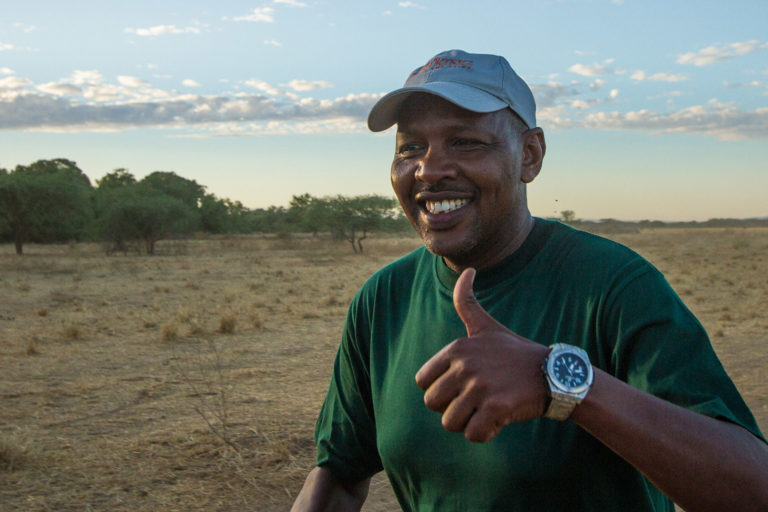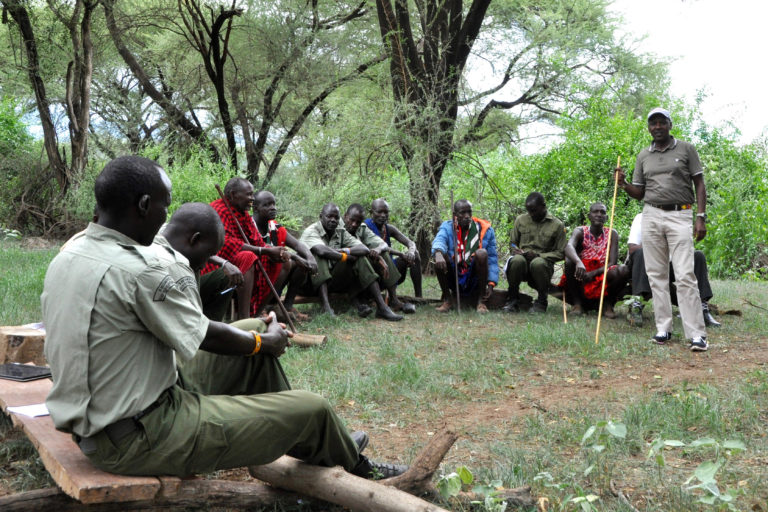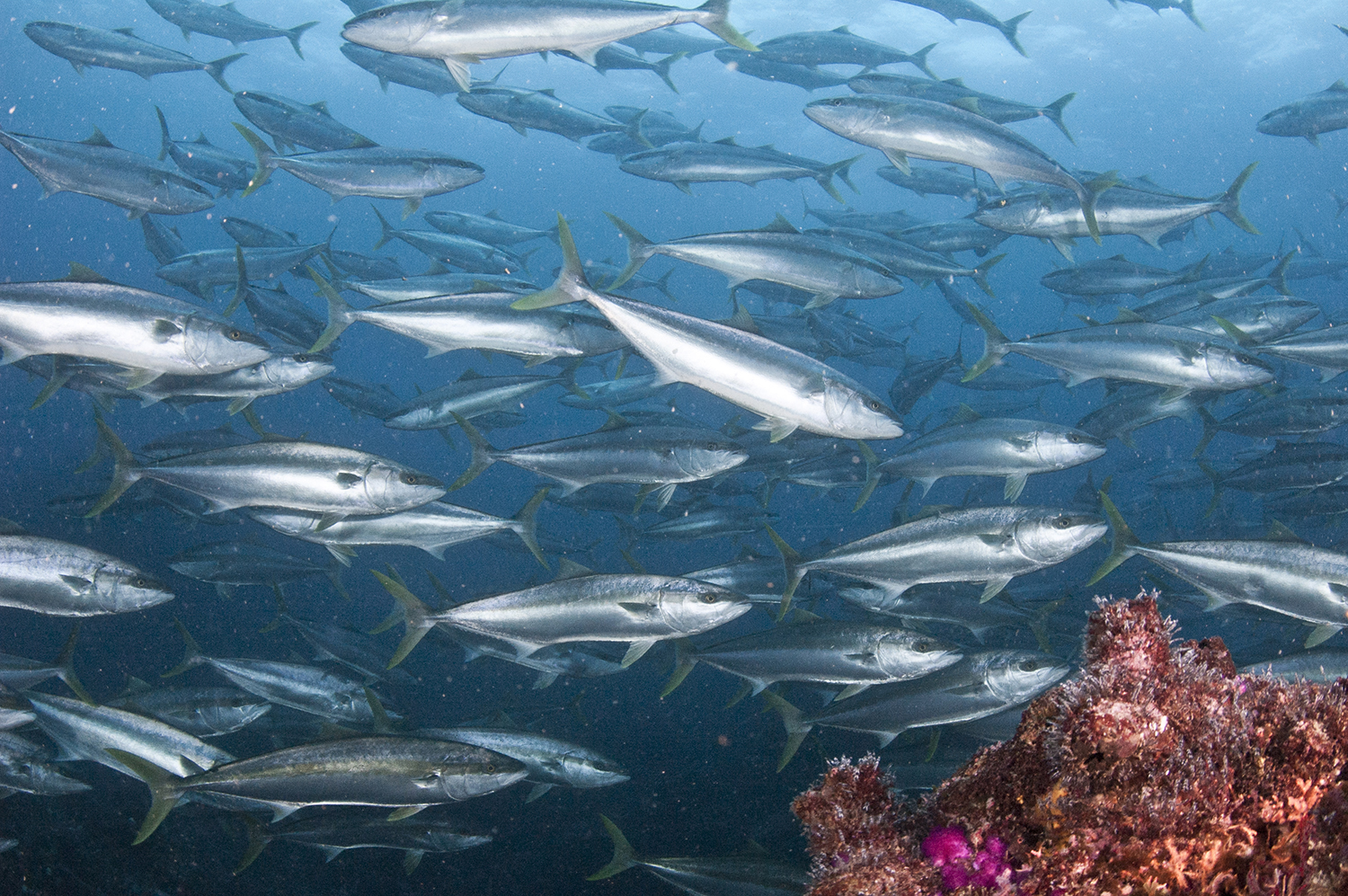by Rhett A. Butler on 20 September 2021

Photo credit: Samantha du Toit
- Efforts to protect wildlife and landscapes have generally been shifting away from “fortress conservation” toward more inclusive approaches. Among these latter approaches are community conservancies, which have been expanding around the world, but have especially gained traction in East Africa.
- According to John Kamanga, the founder and director of SORALO, community-based conservation initiatives in East Africa got a boost in the mid-1990s when Kenya Wildlife Service launched its “Parks beyond Parks” program and international donors started channeling more funds toward communities.
- Over that 25-year timeframe, Kamanga said that local peoples’ interest in conservation has grown, while the international community has become more cognizant of the role communities play in protecting and managing wildlife and natural lands.
- Still, the resources allocated to community conservation have not reached a level commensurate with their impact, the conservation leader told Mongabay during a September 2021 interview.
Efforts to protect wildlife and landscapes have generally been shifting away from “fortress conservation” — where local people are excluded from the lands they’ve traditionally managed — toward more inclusive approaches. Among these latter approaches are community conservancies, which have been expanding around the world, but have especially gained traction in East Africa.
According to John Kamanga, the founder and director of the South Rift Association of Land Owners (SORALO), community-based conservation initiatives in East Africa got a boost in the mid-1990s when Kenya Wildlife Service launched its “Parks beyond Parks” program, which allowed locals to start directly benefitting from wildlife tourism, and international donors started channeling more funds toward communities.
Kamanga said these developments “really started the conversation around community conservation” before “the formal legal legislation came to support the movement.”
Those legal frameworks would culminate in the Wildlife Act of 2016, which “legally recognizes community conservancies and the community conservation movement” in Kenya, according to Kamanga, who has been recognized for his efforts with accolades like the Tusk Award for Conservation in Africa.

John Kamanga. Phot credit: Johann du Toit
Over that 25-year timeframe, Kamanga said that local peoples’ interest in conservation has grown, while the international community has become more cognizant of the role communities play in protecting and managing wildlife and natural lands.
Still, the resources allocated to community conservation have not reached a level commensurate with their impact, said the conservation leader.
“I see a lot of imbalances in investment in conservation,” he told Mongabay. “So much investment goes into formally protected areas, like national parks and reserves but there is limited support for communities who perhaps live further from these places. Sometime people who seasonally need to move an area close to a formally protected area may then suffer from conflict with wildlife but receive no support or benefits from that wildlife.”
“Most of Kenya’s wildlife lives outside of formally protected areas, on these community lands and yet there is little or no investment in these areas in comparison,” Kamanga said. “Historically we have also seen imbalances when investors and tour operators operate businesses on community land and the community receives relatively little benefit.”
SORALO, which Kamanga founded in 2004 to represent several Maasai communities living across a vast area of wildlife-rich lands, is working to change that.
“We are trying to change that relationship to be more of a partnership between the community and investors,” said Kamanga.

John Kamanga at a community meeting. Photo credit: Guy Western
Kamanga says that conservation is a core part of the traditions and culture of many communities, including the Maasai. That gives them a vested interest in conservation and makes them natural partners in conservation efforts.
“Conservation has been part of the lifestyle of our communities for a long, long time,” he said. “It was essential for survival to have a healthy and stable environment. We live off the land and so you really needed to protect it. Therefore, conservation is a central concept to our communities and they know how to use their environment in a sustainable manner. There are again rules and governance structures which have guided this, and allowed that over time they have protected their land and the resources on it.”
“The argument is therefore that we should build conservation today from what these traditional systems were and support these going forward into the future,” he continued. “Conservation should not be seen as something new and scientific, but seen as what communities have always done.”
Kamanga discussed these issues and more during a September 2021 conversation with Mongabay founder Rhett A. Butler.



